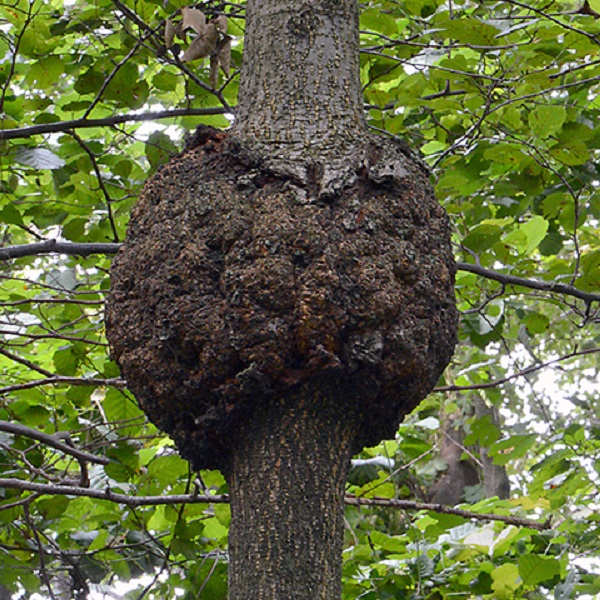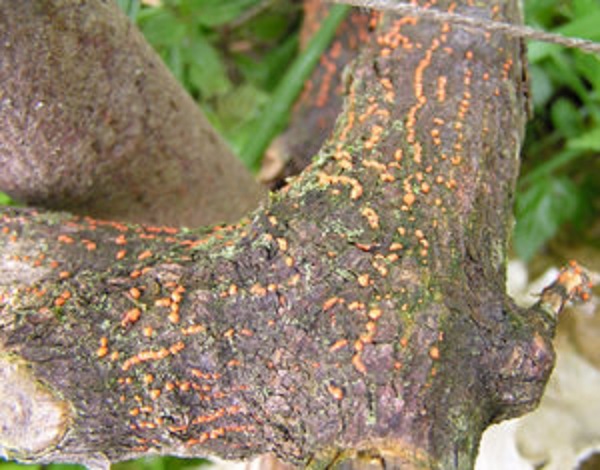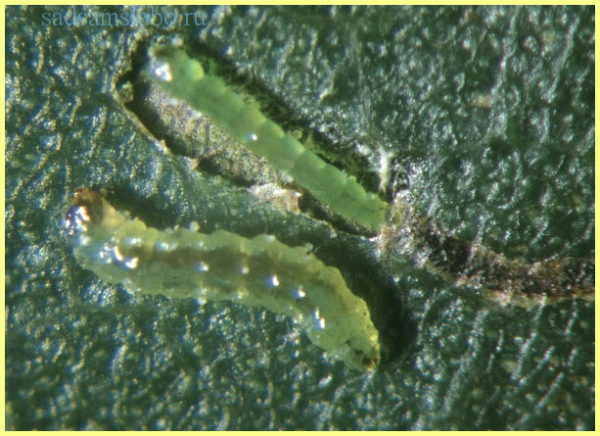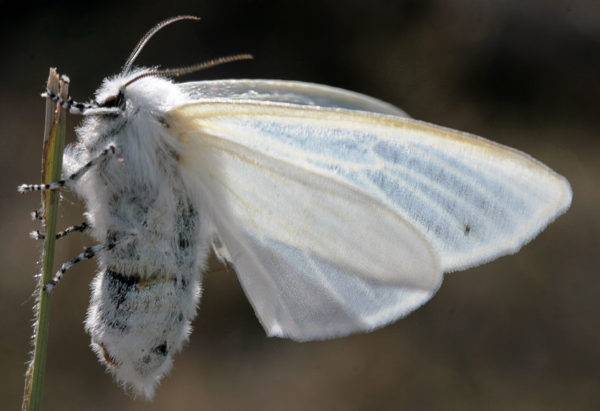Diseases And Pests Of Willow - More than 550 species of willows are known, and their appearance surprises with their diversity. Willows can be high-growing and low-growing. Trees are better known in our area, but shrubs are very common. They differ in color and leaf shape. But despite their appearance and diversity, willows are threatened by many diseases. Dangerous and incurable should be considered in more detail.
In order to avoid pests and diseases in willow, it is necessary to regularly treat them with solutions and concentrates. Since pests live mainly in the ground and in fallen leaves, the land near a tree or bush also requires special care. Leaves are recommended to be collected and thrown away from trees, and the earth is deeply dug. It must be remembered that any prevention is much better than the treatment of the plant.
Disease prevention
As a preventive measure against diseases, trees should be regularly inspected, and the leaves and bark of a tree or bush should be observed. Once every six months, willows should be treated with Bordeaux liquid (3%), this procedure is recommended to be carried out at the end of autumn. In early spring, trees are treated with copper sulfate (1%). It is important to carry out the processing correctly, otherwise, your efforts will be in vain. Processing should be carried out twice, within five days. Such procedures should be carried out when the sun is clearly shining outside and there is no wind.
White heart rot
The causative agent of willow disease is a fungus. This disease is dangerous because it is difficult to diagnose since its focus is in the middle of the trunk. It becomes noticeable only when rotten hollows appear on the trunk. A tree cannot always be saved. It depends entirely on how late the disease was detected. If you managed to notice the disease in time, then you need to:
- Trim affected areas.
- Process cropped places.
- Seal up all wounds, and destroy mushrooms.
In cases of late detection of the disease, the tree will have to be destroyed so as not to infect the rest.
Brown leaf spot
The very name of the disease speaks for itself. There are several types of willow ailment: brown, brown, and black. Spots of the above-listed colors appear on the leaves. Moisture is the key to the development of the disease.
In cases of detection of a disease, a tree or a bush is abundantly treated with chemicals intended for woody plants. The black spot deserves special attention. It rages on all 550 types of willows. Clear signs are spots on the leaves. But they are not black at all, quite the contrary, they are white. And only in the fall, do small spores of the disease become noticeable on these spots. Spores mature only in March, they are on the leaves all winter, and in the spring they infect new leaves. Infected leaves, possibly even entire branches, must be burned. The whole plant is simply treated with a chemical preparation.
Crown gall
These are huge formations on a tree trunk, sometimes on a rhizome. They are a protective reaction of the plant to fungal diseases, as well as all kinds of bugs. Single formations are not terrible for the plant.
They pose a threat only when the trunk is completely fouled. This will greatly weaken the tree. As a result, it may die. There are not many methods of struggle, or rather, he is one. It is necessary to ensure that there are no pests on the tree that would cause such a protective reaction.
Powdery mildew
A disease that affects not only willows but also many other plants. It is well known to people who grow vineyards. A sign of this problem is a white powdery whitish coating on the foliage of the plant. Fungal disease. It appears only in the middle of summer. Powdery mildew spores overwinter on the leaves. The disease is much easier to treat in the early stages when it is not yet running. It is much more difficult to deal with a neglected form of powdery mildew. Therefore, watch the plant, and at the slightest hint of a sore, immediately treat it with fungicides (1 time in 14 days). To avoid willow disease, carry out preventive spraying in spring and autumn.
Willow scab
This is also a fungal disease. The peak of the development of the disease occurs in autumn or spring when air humidity is high. On an infected tree, leaves and shoots turn black almost immediately. Affected parts dry out over time. If the tree is not sick for the first year, then it weakens and dries out completely. Methods of struggle are no different from methods of dealing with other fungal diseases. Trees need to be treated with fungicides.
Rust
It is also a fungal disease and the methods of dealing with it are absolutely similar to the above methods. It appears on the leaves with a rusty coating. First, brown dots appear on the leaves, which eventually affect the entire surface of the leaf.
Cortical necrosis
Young willow disease. The disease in 90% of cases leads to the destruction of the plant. In order not to catch necrosis, your tree must be perfectly healthy. Since the causative agent of necrosis, it can only multiply in affected trees. Diplo necrosis is a type of necrosis that is characteristic only of weeping willows. Tubercular necrosis is also a subspecies of necrosis. Methods of dealing with necrosis are completely different from each other.
Birch heart fly
This small pest harms the tree, forming so-called tunnels in its shoulder straps. Of course, they are tightened over time, but they do not pass without a trace. Yellow traces form in place of the tunnels. Pest control is impossible. Methods of struggle simply do not exist.
Willow solyanka
White and very alluring butterflies eat the leaves of a tree or bush. A butterfly caterpillar can completely destroy the leaves of a small tree. Towards the middle of summer, the caterpillar turns into a butterfly, laying eggs on the remaining leaves. As a result, the process is repeated next year. Fight butterflies with the help of birds. Draw them to the tree in any way possible.
Alder weevil
A clear sign of the alder weevil is dried leaves and shoots, as well as passages in the stems. These are usually pests of young plants. Weevil larvae perfectly endure harsh winters, as they hibernate in the bark of a tree.
Willow leaf beetle
The second generation of willow leaf beetles has a destructive effect on the willow, they almost completely destroy the leaves of the tree. Beetles lay eggs in spring. The larvae feed exclusively on the lower part of the leaf. At the end of May, the larvae pupate. And in the middle of summer, that same second generation of bugs appears. For the winter, the willow leaf beetle climbs deep into the bark, where it tolerates winter well. Fighting the willow leaf beetle is not easy. In autumn, you need to get rid of all dry branches. It is desirable to burn them. The soil under the tree must also be disinfected (straw can be set on fire on it). In this way, it is possible to destroy beetles that have decided to winter not in the bark, but in the soil. In summer, they try to catch leaf beetles with traps. In case of massive damage to a tree, the strongest chemical preparations are used.
Willow leafhopper
A pest that destroys shoots of willows. In spring, it lays larvae in young shoots, which subsequently weaken and crack. The larvae feed exclusively on the juice of the shoots. Young shoots stop growing, become irregular, weaken and eventually die. Affected shoots must be immediately removed, and the larvae destroyed. They can be collected or caught by special methods. And, of course, if the tree is severely affected, then chemicals are used.
Spider mite
It is a sucking insect, that lives on the inside of the foliage, it is from there that Yin draws all the juice. After that, the leaves are deformed, dry, and crumble. The tick can overwinter both in the bark of the tree and in the soil, and in the spring begin its vigorous activity. With a slight infestation, a soap solution and insecticides are used. With a large lesion, they resort to more silty drugs, for example, karbofos.
Willow common aphid
This insect is also considered sucking. In spring, it sucks the juice from the leaves and bark of the willow, and also spreads to nearby plants. Signs of aphids are similar to tick-borne invasion, the foliage is deformable, dries, and falls. A distinctive feature is that in the presence of aphids, whitish scales (the old “skin” of the individual) are visible on the ground under the tree. As soon as the winged aphid is born, it moves to the rows of the garden, actively reproduces, and by the end of summer returns to the tree. An insect can overwinter in the bark. You can avoid the spread of aphids by not planting crops such as carrots, parsnips, and dill next to it, they will have nowhere to breed. For the fight, spraying with a soap-kerosene solution is used, treated with insecticides. You can resort to improvised means, prepare a decoction for spraying from potato tops,
Mouse-like rodents also pose a threat to the willow, they damage the root system of the tree. They are especially dangerous for planted cuttings. You can exterminate them with the help of poisonous baits.
Of course, there are a lot of diseases and pests of willow. It's almost impossible to see everything. But the most dangerous are outlined above. It is important to remember that timely preventive maintenance is the key to a healthy plant.
On a note! Do not forget that pests and diseases of a different nature most often affect a weakened plant. Therefore, take care of your willows correctly, fertilize, fertilize, water, remove fallen leaves, and take preventive measures in a timely manner. To a strong and strong tree, many problems are not terrible. And of course, inspect the willow more often, it is easier to get rid of the problem when it is at the initial stage of its development.
See other article:













